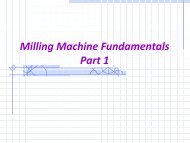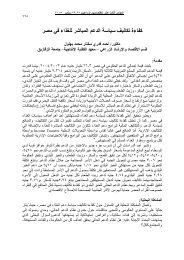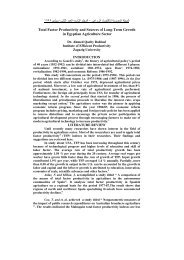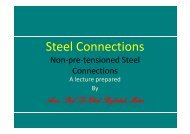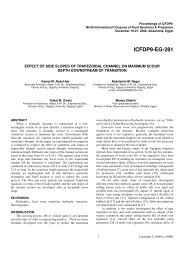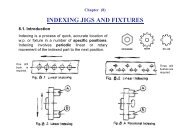Amino Acid Transport
Amino Acid Transport
Amino Acid Transport
- No tags were found...
You also want an ePaper? Increase the reach of your titles
YUMPU automatically turns print PDFs into web optimized ePapers that Google loves.
xylem in the root (Pate 1983; Cooper and Clarkson 1989; Schurr and Schulze 1995).<br />
Thus, cycling amino acids between the two vascular systems in mature leaf and root<br />
tissue (see Fig. 1) permits dynamic adjustments of carbon and nitrogen metabolism in<br />
response to developmental queues or environmental change. For example, the metabolic<br />
needs of the mature root system emphasizes catabolic reactions associated with maintenance<br />
reactions versus the anabolic reactions that drive early growth. Therefore, excess<br />
amino acids transported to the root under these conditions can be redirected to the shoot<br />
for subsequent incorporation into developing seed. Significantly, excess amino acid nitrogen<br />
arriving at the root may also represent a dynamic signal that triggers the downregulation<br />
of nitrate assimilation (Cooper and Clarkson 1989; Crawford 1995; Padgett<br />
and Leonard 1996).<br />
In addition to its role in primary assimilation, amino acid transport is a key process<br />
in leaf senescence and seed germination. In rice, for example, more than 60% of the<br />
amino nitrogen delivered to developing leaves and ears is derived from amino acids<br />
retrieved from senescing older leaves (Mae et al. 1983, 1985; Feller and Fischer 1994).<br />
Likewise, amino acids released from storage proteins during seed ge~nation are the<br />
principal nitrogen source in growing seedlings (Schobert and Komor 1989). Taken together,<br />
it seems clear that amino acids are the currency of nitrogen exchange in the plant.<br />
<strong>Amino</strong> acids are transported into plant cell by proton-coupled symporters that link translocation<br />
across the plasma membrane to the proton-motive force generated by the €I?-<br />
pumping ATPase (Fig. 2; Bush 1993a). These are widely expressed carriers that appear<br />
to be the primary pathways for amino acid transport into plant cells. However, there is<br />
some evidence for facilitated transporters that mediate passive amino acid transport, although<br />
little biochemical and no molecular characterization of such porters has been<br />
published.<br />
The amino acid symporters have been investigated in recent years using purified<br />
membrane vesicles and imposed proton electrochemical potential differences (Bush<br />
1993a). Purified membrane vesicles are a very useful experimental system for studying<br />
membrane transporters. Although membrane transport activity can be examined with<br />
intact cells, there are many complications associated with metabolism and intracellular<br />
comp~mentation that limit experimental interpretation. Additionally, it is difficult to<br />
dissect the bioenergetics of a transport system in intact tissues because of complex interactions<br />
among the primary pumps, ion channels, and other unrelated porters. Isolated<br />
membrane vesicles, on the other hand, allow one to focus on specific transport processes<br />
while minimizing problems associated with the living cell. The major attributes of the<br />
membrane vesicle approach include (1) unequivocal identification of membrane location<br />
using purified vesicles, (2) elimination of posttransport metabolism and compartmentation,<br />
and (3) the ability to control both intra- and extravesiculq solution composition<br />
(Bush 1992). The ability to control solution co~position on both sides of the membrane<br />
is particularly useful for investigating the bioenergetics of the transport process. With<br />
this approach, the basic transport properties of the plant amino acid symporters have<br />
been described (Bush 1993a).<br />
Plant amino acid symporters are electrogenic transporters. Electrogenicity was



